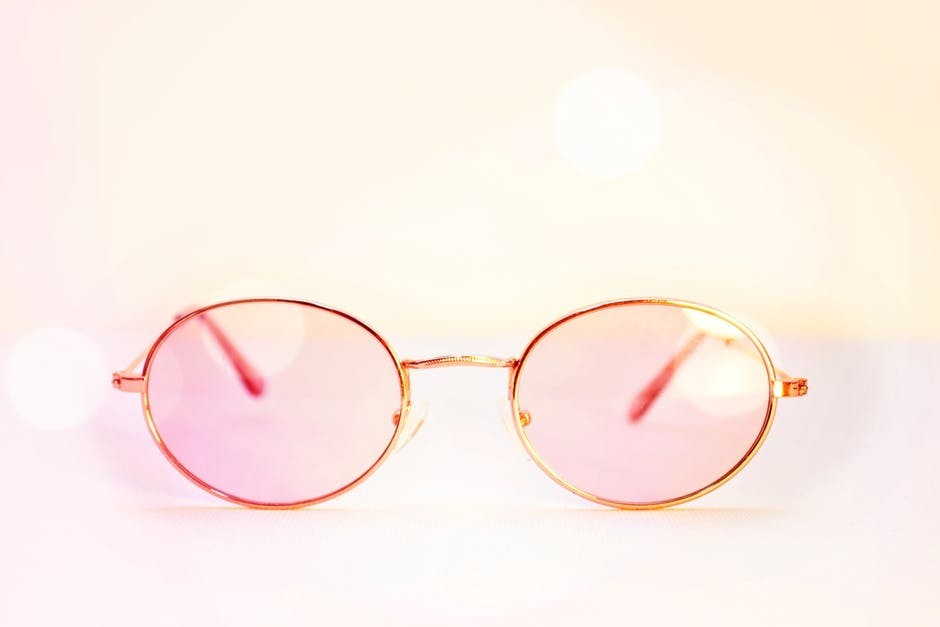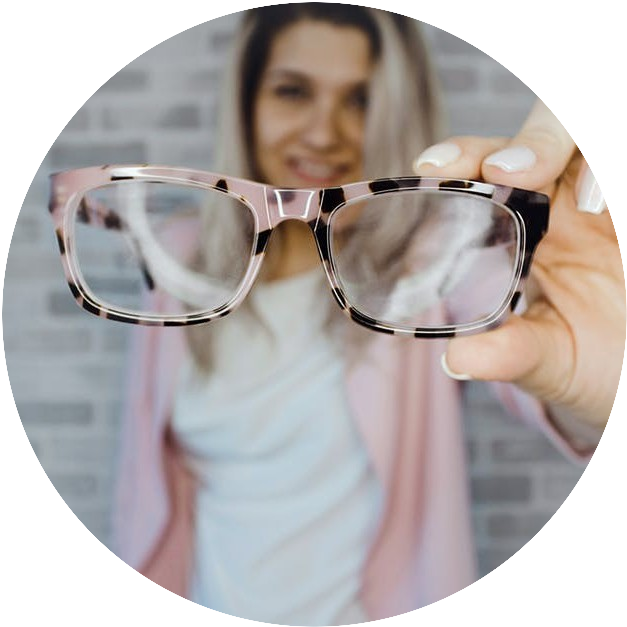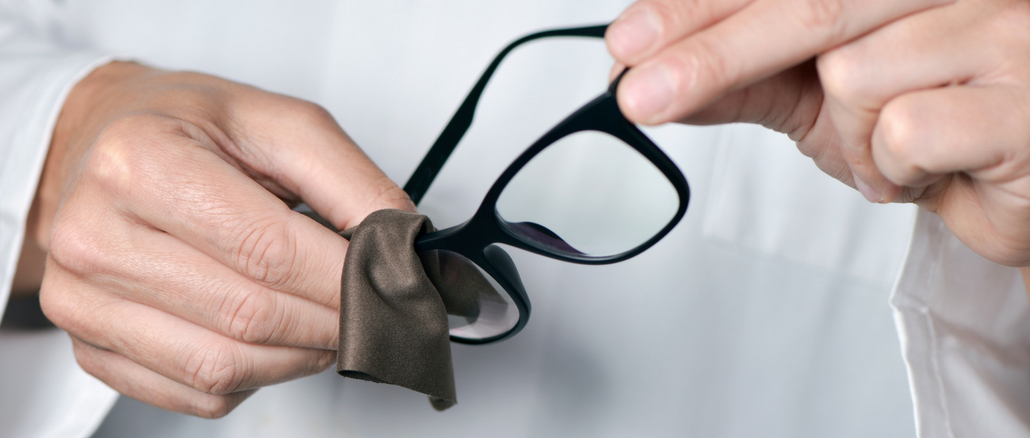Bear in mind that some of the links on this website are affiliate links. If you go through them to make a purchase we will earn a commission at no extra cost to you but helps support our website. Keep in mind that we link these companies and their products because of their quality and not because of the commission we receive from your purchases.
Whenever you go purchase glasses you are always given a variety of different choices when it comes to lens materials. All the different types of lens materials vary in weight, thickness, scratch resistance, and impact resistance. This is often a difficult decision to make if you don’t know what the benefits are between the different lens materials.
Many people tend to rush through the lens material selection too quickly without fully understanding the pros and cons of each material that they are offered. Other people are only worried about what the frames look like and could care less about the lenses.
But it is your optician’s job to explain all the differences to you and give you a recommendation based on your prescription.
Table of Contents
Plastic vs. Polycarbonate Lenses
Today we are going to be talking specifically about plastic vs polycarbonate lenses and what the major difference is between the lens materials.
Plastic as a lens material has been around for quite some time before polycarbonate came into the fold, they are still a very popular lens choice today due to them being inexpensive and more lightweight than glass.
Polycarbonate lens didn’t truly gain traction among the optical industry until more recently due to various problems with the material clarity and manufacturing. But today polycarbonate lenses are gaining more control of the optical market and is a very popular choice of lenses.
So let’s dive in and take a look at what the differences are between these two very similar but different materials.
RELATED: How to clean your glasses the right way
Plastic Lenses (CR-39)
Plastic lenses or also known as CR-39 is the most common optical lens material you will find. The CR stands for “Columbia Resin” which is the polymer that the material is made out of and the 39 means that there were 38 other “Columbia Resin’s” that didn’t make the cut for optical lenses.
Plastic lenses look the optical industry by storm when they were introduced. Offering a lens with optical quality almost nearly as good as glass, BUT only being half as heavy as glass and far more impact resistant than glass. Although at the time plastic lenses had
Fast forward to modern-day, plastic lenses are still the most popular lens material because it does still have many benefits though it does have some downsides to it as well. Let’s take a look at the pros and cons.
Pros and Cons of Plastic Lenses
- Pros
- Inexpensive
- Great Optical Quality
- Lightweight – Half the weight of Glass
- More Impact Resistant than Glass
- Accepts Tints
- Cons
- Thickness
- Vulnerable to scratches
- No UV Protection without added coating.
One of the best benefits of the plastic lens is how inexpensive they are. You can usually find some single vision lenses for around $30 and some bifocals for $50. Plastic lenses also have a higher Abbe value which causes less chromatic aberrations. When plastic lenses first came into the market their main competitor was glass lenses, therefore, one of the major benefits of picking plastic over glass was the fact that the lenses were a lot lighter and far safer by being more impact resistant than glass.
Plastic lenses can accept tint colors for the people that like a light tint on their lenses. These tints are available in a variety of colors including, brown, gray, yellow, red, blue, rose, green, and more.
Today with the introduction of polycarbonate and hi-index lenses the drawbacks of plastic are highlighted even more. Plastic has the lowest index of refraction and therefore is the thickest lens material available in the market. Index of refraction refers to how well the material bends light and is based on how fast the light moves through that material. A higher index of refraction also means denser material and therefore thinner lenses.
Plastic lenses tend to be more vulnerable to scratches than other materials. The plastic material itself is very vulnerable to scratches and hard scratch-resistant coatings have been developed as a solution to this problem. Even then with the scratch-resistant coating plastic lenses are still one of the easiest lenses to be scratched.
Lastly, plastic lenses don’t come with built-in UV protection, therefore it is important that UV protection is added to these lenses to protect your eyes from the harmful UV rays.
Polycarbonate Lens
Polycarbonate lenses were first introduced into the optical world through safety glasses. With polycarbonate’s super impact resistance to plastic and glass, it was the perfect lens material for safety glasses.
Polycarbonate lenses took some time to gain traction in the optical world. The first polycarbonate lenses ran into three major problems that kept it from gaining traction, these were as follow:
- Quality – The first polycarbonate lenses that were introduced into the optical world were acceptable as safety glasses but doctors and dispensers were not thrilled with the quality. The first polycarbonate lenses had minute black carbon particles embedded inside the lenses. Plants that were using polycarbonate lenses for safety glasses didn’t care about the tiny black particles. Doctors and dispensers used to the pristine clarity of plastic and glass lenses refused to accept the little black particles in the lenses.

- Edging Problems – Because of the unique softness of the polycarbonate lenses, it could not be edged on the edgers that were used to edge plastic and glass lenses. The investment to upgrade equipment was too costly, and there was not enough demand for the new lenses.
- Surfacing Problems – It took time for manufacturers to develop new surfacing equipment that could surface polycarbonate lenses.
Eventually, these obstacles were overcome and the polycarbonate material got developed to the polycarbonate material we know today, thanks to the CD and entertainment industries.
Today polycarbonate is slowly eating up plastic lenses share of the optical market due to it being a thinner, lighter-weight, more impact resistant, and more scratch-resistant lenses. Let’s look at the pros and cons of polycarbonate lenses.
RELATED: Sunglasses for babies with polycarbonate lenses
Pros and Cons of Polycarbonate Lenses
- Pros
- Super Impact-resistance
- 20-35% thinner than plastic and glass
- Lightweight – 20% lighter than plastic, substantially lighter than glass
- Built-in 100% UV blocker
- Cons
- The material is soft and requires a scratch-resistant coating
- Distortion on lens edge for higher prescriptions
- Is more reflective than plastic or glass (Anti-reflective coating is recommended)
Polycarbonate lenses are slowly starting to come standard from many eyeglass manufactures. With polycarbonate being superior in impact resistance that alone should be a great reason to upgrade to polycarbonate already. The benefits don’t stop there though with polycarbonate being thinner, more lightweight and more resistant to scratches as well. Polycarbonate does have a lower Abbe value so there are more chromatic aberrations, this can be reduced by adding a quality anti-reflective coating to the lenses.
RELATED: Best Anti-Fog for Glasses
Which One Should You Go With?
Ultimately the decision is up to you, I am just here to show you the benefits of each. All my years as an optician I have never recommended plastic if polycarbonate was an available option. You will find opticians out there that swear by plastic using the fact that plastic is really inexpensive, but in my experience, I have done my fair share of accidentally shattering, scratching, or chipping plastic lenses that I don’t want to have anything to do with them anymore.
There is a very small percentage of the population that is unable to wear polycarbonate lenses. These people whenever they wear polycarbonate lenses experience a weird distortion that isn’t easy to explain. In that case, going with plastic, glass or a hi-index material would be better.
Final Thoughts
Although plastic lenses are more vulnerable to scratches, throughout the years in the industry I have seen people with plastic lenses with not one scratch on them after using them for 2 years.
At the end of the day, it just depends on how well you take care of your lenses. Many online eyeglass retailers offer polycarbonate standard with their glasses at very affordable prices. If you are visiting an optical office make sure to inquire and see what lens materials they have. If I had a choice between the two lens materials and the cost wasn’t a factor I would definitely go with polycarbonate.
What kind of lenses do you have in your glasses? Let me know below!
If you are a prescription contact lens wearer be sure to check out where the best places to buy contact lenses online are, coupons & promo codes are available
As always thank you for reading and if you have any comments, questions or concerns feel free to reach out to me below in the comments and I will get back to you.
